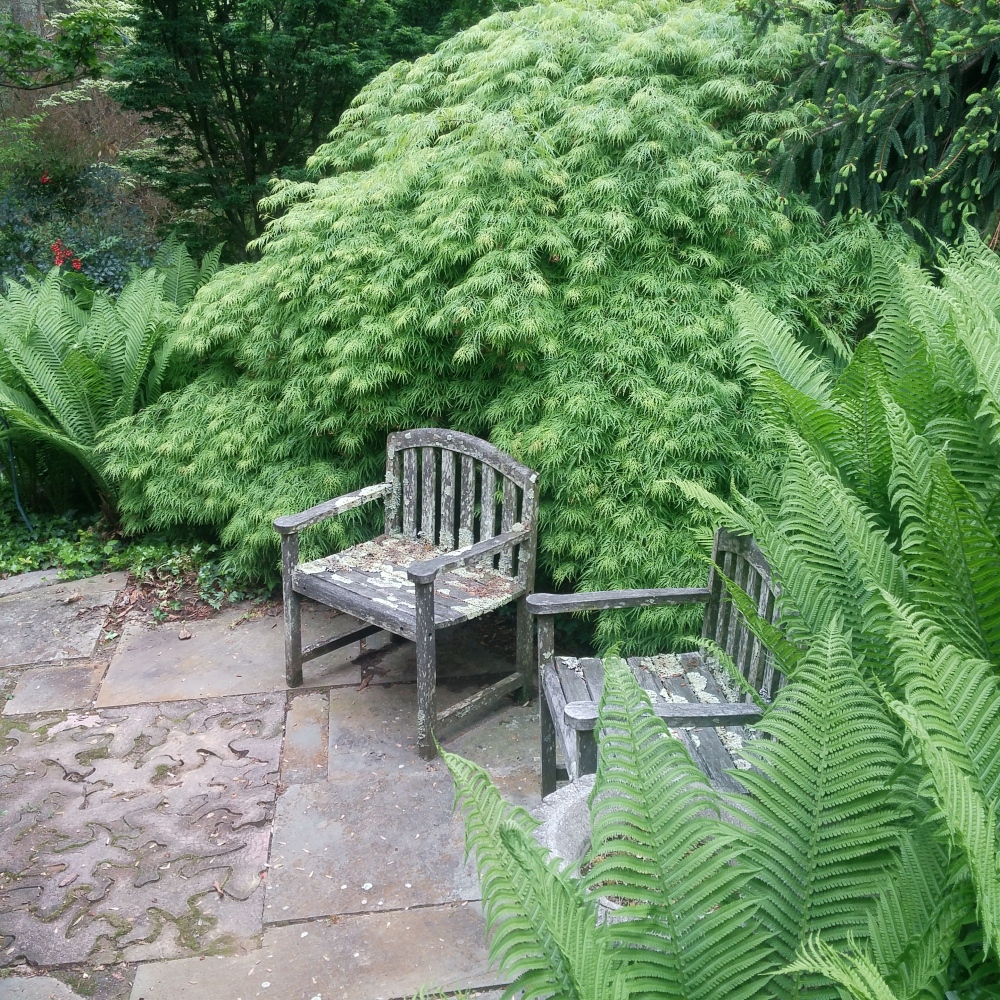I notice that dry stacked columns constructed from blocks of limestone have gone out of plumb after too many years of freezing and thawing. A couple columns remain relatively straight, but several aren’t, and I vaguely recall seeing this some time ago. Then, as now, I hoped that evergreen foliage would disguise the crookedness so that repairs could be avoided. Happily, my wife has not noticed, or at least she hasn’t given it enough thought to bring it to my attention.
The blocks are heavy, not so heavy that one cannot be lifted, but lifting ones above waist high was difficult fifteen years ago when the columns were first stacked. While I proudly boast I’m able to do anything I could when I was much younger, I know this isn’t true, and the fewer confirmations of this, the better.
There are a variety of projects around the garden that could use some tidying up, and no way am I paying someone to do the work for me. If I can’t, or won’t, and I barely trust anyone to cut the grass, things will stay as is, and I don’t know if I’m more tolerant of imperfections (and messes far worse) as I grow older, but there are times when age is a handy excuse. I’m happy enough to leave some things for the next generation, or the next owner of this place, and if that’s another two or three decades I’m pretty certain I can live with it.
With a void beneath a concrete inset in the upper bluestone patio, the paving slumps and sand must occasionally be filtered through the sagging pavers. The proper repair would remove the concrete inset, add to and compact the base, then relay the interlocking pavers. It’s not a big project, but so far I’ve been successful rationalizing that the out of kilter patio is “rustic”.
The same goes for stone slab steps that have slid down the slope in the side yard, slightly, but so that the gap between stones is noticeably uneven. They remain functional, but every time I walk the path I consider fixing the steps, and stones that wobble over surface roots of the blackgum. The roots cannot be removed, so with infrequent visitors it is easiest to caution to watch your step, and leave the stepping stones and steps as is.
Thankfully, five ponds, varying from a hundred to fourteen hundred square feet, require little care besides annually chopping down irises, cattails, and pickerel weed. So far, I’m able to look the other way, mostly, over a recent invasion of Japanese stilt grass, but with ponds or without, a garden that covers an acre and a quarter has plenty to keep a person busy.
Besides the necessities of new plantings and keeping up with weeding, there are constant problems with limbs that fall from maples and tulip poplars in the forest that borders the garden. Fortunately, most fall to narrowly miss prized shrubs, but regular cleanup is required, and occasionally a tree falls that is a much bigger project. I see that an old red oak is dead, and if it would fall in exactly the wrong direction it could be a problem. Hopefully it will fall into the forest, and not out.
I am quite certain that a Japanese maple beside the driveway has died, and it appears that a long established variegated Chinese dogwood (Cornus kousa ‘Wolf Eyes’, below) has perished in constant wetness this summer. The maple suffered injury to its bark when two hornbeams were removed several years ago. The bark cracked when the tree was exposed to sunlight, and evidence of the maple’s slow decline has been obvious. The Japanese maple dropped all leaves in August, and now branch tips far out of reach have curled, a troubling sign in my experience.
These are not the first trees to die in nearly three decades in this garden, so I’ll not mourn the losses, but trees must be removed, now or at least before spring. Fortunately, both are in good spots, where the maple can be dropped onto the driveway and the dogwood onto the very swampy rear lawn. Both can fall without damaging anything, but it’s a couple hours I could be doing something else. Like resting.





Rustic; that is a good way of explaining it. Even when I was young, I was amazed with how much my colleague had planted when he was younger in the middle of the 1970s. That was before my time. He put all the stock rhododendrons into the ground in a very informal manner that fit into the forest. It works very well, and takes advantage of the trees, rather than cutting the trees down and replacing them with saran for shade. (duh.) It is not how I would have done it, but it is better. I hate to remove plants that eventually die, just because I know that he planted them so long ago.